Consider these sustainable fabrics next time you’re shopping
With a sea full of fabrics, it’s hard to know what to look for when you’re shopping. There’s a lot of ambiguity when it comes to what is sustainable and what’s not. Does organic mean sustainable? How about recycled? It’s hard to know! For all our fashion and earth lovers, we’re here to clear the air! We created an easy list of the top 7 sustainable materials to keep an eye out for when you shop!
The Most Sustainable Fabrics
1. Linen
We’ve been using this sustainable fabric for centuries. Linen was literally found in caves in Georiga dating back to 36,000 years ago. It was also highly valued by the Egyptians. So valued in fact, it was used as currency, mummification and burial shrouds. Thats the thing about linen, its not just for clothing. It’s used for bed and bath fabrics, furniture, books, and more.
Linen is derived from the cellulose from the flax plant and doesn’t require a lot of water, or even pesticides to grow. Although the quality of linen is extremely important, making it necessary to pull up the entire plant or cut very close to the root. After that, they take the seeds out so they can use the fibers from the stalk. Linen is also biodegradable, and doesn’t even need healthy soil to flourish. Unlike a lot of crops, it can grow just about anywhere!
Every single part of the linen plant is also used, creating no waste. Used linen can also be recycled into paper and insulation materials for the car industry. Not only is this fabric eco-friendly, it’s also light, absorbs, moisture, and doesn’t hold on to bacteria! Its cool and breathable, and only gets softer the more you wash it. Lines sounds like a the sustainable fabric winner!
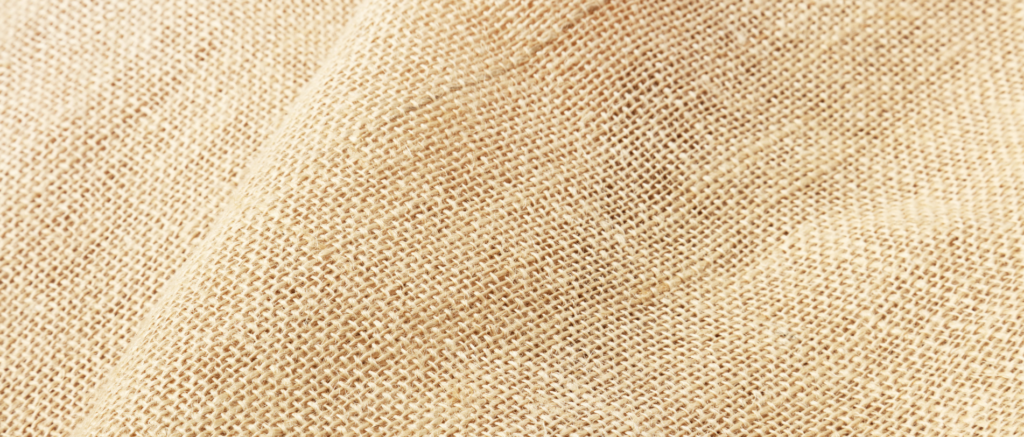
2. Hemp
Hemp’s middle name is “versatile” because this sustainable fabric can be used for just about anything! It’s even edible! From clothing, to food, to construction, to beauty products, it really does it all! In fact, more than 70% of paper was made from hemp before 1883. Even the Declaration of Independence was written on hemp paper.
Hemp also considered, carbon positive, which means it returns up to 70% of nutrients it initially takes form the soil, and also expelling oxygen as it takes away CO2 from the atmosphere. It doesn’t take up much space compared to other crops, and requires drastically less water as cotton. Hemps uses about 700 gallons of water to produce 2.2 pounds of hemp, whereas Cotton uses 5,000 gallons to produce the same amount of cotton. Hemp is also a top runner when it comes to isolating CO2 from the atmosphere, removing 1.63 tons of CO2 from the atmosphere per ton of hemp.
Hemp keeps you warm when it’s cold, and cool when it’s hot. This amazing plant grows worldwide and is so strong that it doesn’t require any chemicals to grow by overpowering anything trying to grow in its space, essentially doing the weeding for the farmer. For more information about how hemp is changin’ the game, check out: Hemp Clothing: The Fast Growing, Sustainable Fashion
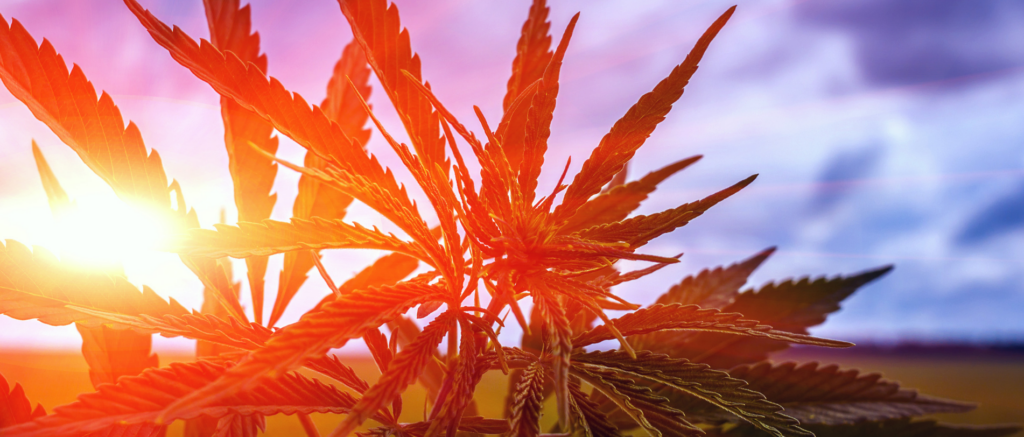
3. Recycled Cotton
Emphasis on “recycled”. Regular cotton is problematic due to its high water and chemical intake it takes to grow. Organic cotton is a tad better, but still is water intensive.
Recycled cotton is made from old consumer and industrial cotton. The largest volume comes from pre consumer scraps from factories. Post-consumer scraps are also utilized, but are much more difficult to sort through because of the various color dyes.
This cotton also uses dramatically less water and energy to produce because the factories aren’t starting from scratch. It’s also repurposing all this cotton that would have otherwise have been found in a land fill, and already dyed which cuts costs and chemicals.
According to the Council for Textile Recycling, recycled cotton saves 25 billion pounds of waste per year. The process is tedious, but does good. Fabrics that are the same color are shredded and made back into raw fiber, from there, the fiber is spun back to yarn and on to its next life. Recycled cotton is light, soft, breathable, and can be used for most activities, making it a great day to day option.
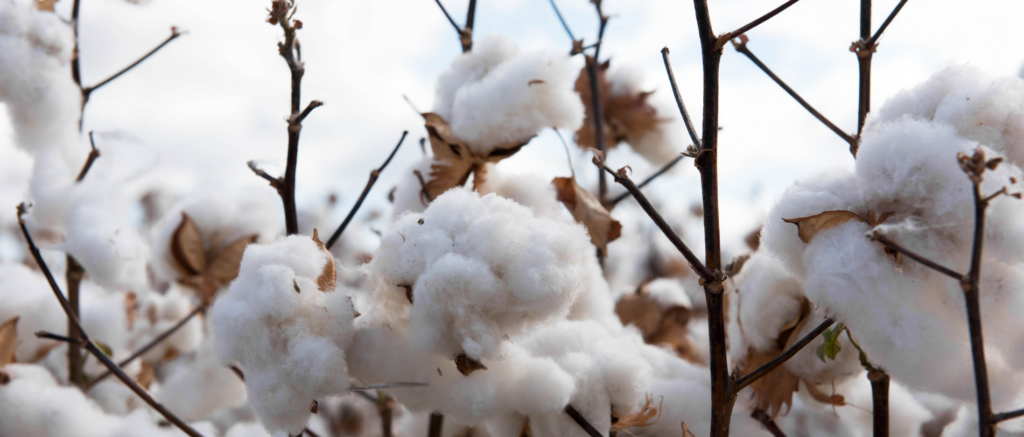
4. Wool
With over 10,000 breeds, able to thrive in a variety of temperate and extreme conditions, think of sheep as carbon storing machines. As a part of the natural carbon cycle, plants convert carbon from the atmosphere through photosynthesis into organic compounds that the sheep then use to grow wool. This is a natural, renewable, ongoing process through which carbon is sequestered from the atmosphere. Sheep’s wool is made up of 50% carbon by weight, acting as both a shield against the elements but also against global warming caused by carbon dioxide levels.
The high carbon level of the fiber adds to the strength of the material meaning you get a better product, lasting a longer time, able to be reused and even recycled. When the wool product ends up in a landfill, wool is fully biodegradable.
When it comes to our experience with our favorite wool products, wool has many natural properties proven to be beneficial for health, wellness and comfort. Think about your life as a sheep and how of course your wool offers UV protection, humidity control, temperature management and breathability. As we progress through spring, summer and fall, more erratic weather means wearing clothing that can service all your climate related needs.
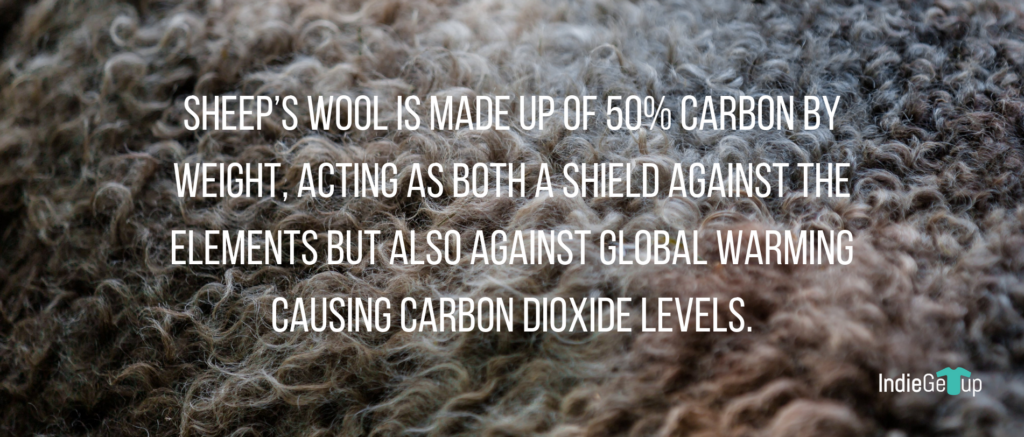
5. Recycled Polyester
While regular polyester is pretty unsustainable, and uses massive amounts of chemicals and water, recycled polyester uses PET, a chemical used to create polyester, to break down the material and repurpose it. PET is the same material that is found in clear plastic water bottles, so water bottles are collected and start their journey to becoming yarn. After initial collection, the water bottles are crushed into small chips.
The small chips are heated and pressed through a spinneret to form yarn. This process uses up to 53% less energy than the creation of normal polyester. Repurposing the old polyester also reduces C02 emissions by up to 75%, and doesn’t require new petroleum to create, ultimately reducing the overall carbon footprint. This process is energy efficient, and keeps fabrics out of landfills.
The amazing thing about polyester is there is no sacrifice to the quality when recycled. This means virgin and recycled polyester both perform the same when it comes to strength, durability, and functionality. It can also be recycled again and again with no consequence to the quality, ultimately creating a closed loop, making this a very sustainable fabric.

6. Tencel/Lyocell
One of the hottest new sustainable fabrics on the market is Tencel Lyocell fibers. Tencel is created from Eucalyptus tree wood pulp that is turned into cellulosic fiber. The wood comes from sustainable plantations and wood is considered a renewable raw material. Once the wood is harvested, it is soaked in amine oxide which is a non-toxic solution that is good for more than one use. Then the wood is pushed into small holes that create fibers and from there, the fibers are chemically treated to be turned into yarn, and ultimately woven into clothing.
Wood is also is biodegradable, and thus creating a closed loop production process. It also requires less water to produce than cotton, and is certified biodegradable by the Belgium certification company Vincotte. It only takes 6 weeks to fully decompose!
This innovative fabric is sweat wicking, naturally wrinkle resistant, antibacterial, and 50% more absorbent than cotton. Due to these characteristics, it’s a great option for making activewear, bedsheets, dresses, and more! The final product requires minimal energy in comparison to other fabrics.
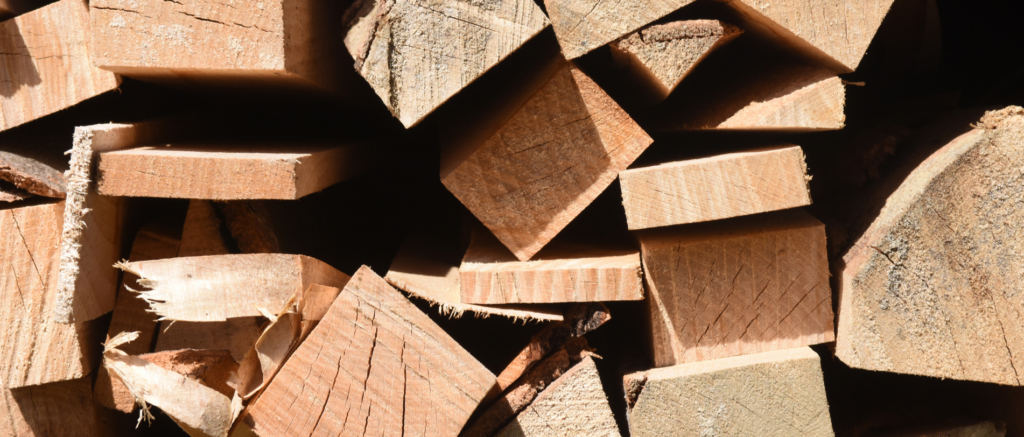
7. Econyl
Also a recycled sustainable fabric, Econyl is a new polyamide yarn made from fish nets, plastic, and waste fabric to create a yarn extremely similar to nylon. This does so much good for the ocean since fish nets are trapping whales, dolphins, turtles, and ultimately killing off marine life. Econyl also uses less water and creates less waste, making this a sustainable fabric.
It’s a 6 step process made by an Italian firm, and when the new Econyl is made, it has the exact same quality as virgin nylon, making it an awesome option if you love nylon products! The waste is collected and cleaned, then it is shredded and depolymerized to extract nylon. Then it is polymerized into yarn and ready to be made into textile products.
Virgin nylon is not biodegradable, so if it’s not recycled somehow, it ends up in the ocean, in a landfill, and ultimately, harming the earth. This gives the virgin nylon a second chance at life, and does good for all parties involved!

Conclusion
We believe what you put on your body is just as important as what you put in your body. When it comes to shopping, knowledge is power, and being informed on what fabrics are helping, instead of harming the world helps us take a step in the right direction. We hope this information about sustainable fabrics will help you fill your closets with eco-friendly sustainable clothing. One dollar at a time, let’s vote for a greener world and wardrobe!


About Author
Brandon
Owner of IndieGetup, the premier sustainable marketplace for men to shop ethically.

![Sustainable Fabrics | Ultimate Guide on the Most Ethical Materials [2022]](https://indiegetup.com/wp-content/uploads/2022/08/sustainable-gifts-1.jpg)